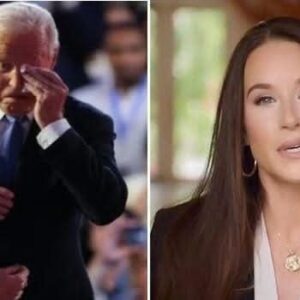Charlie Kirk’s final public words came during a speech at Utah Valley University when a student asked about the number of mass shooters in the past decade who were transgender. Kirk responded briefly with “Too many,” to applause. Suddenly, a gunshot shattered the moment, striking Kirk in the neck and sending the crowd into panic. The campus erupted into chaos as students scrambled for safety and emergency responders rushed to the scene. The student who had asked the question, initially reluctant to speak publicly, was thrust into the national spotlight amid the unfolding tragedy.
Following the shooting, law enforcement quickly detained two individuals but released them after questioning. The actual suspect remained at large, with surveillance footage showing a figure fleeing across a rooftop. Investigators recovered a rifle and ammunition nearby, indicating a planned sniper attack rather than a random act of violence. The FBI and local authorities intensified their investigation, seeking tips from the public while trying to piece together the motive and identity of the shooter. Meanwhile, the student who had asked the question found himself overwhelmed by unwanted attention and scrutiny.
In the days after the shooting, the student took to social media to reject violence and express sympathy for Kirk’s family. He made it clear he did not want the tragedy to become about him, emphasizing that no political disagreement justifies violence or loss of life. As investigations continued, the campus community grappled with grief and the challenge of returning to normalcy despite lingering fear. The student reflected on how quickly political discourse had escalated into deadly violence, recognizing the fragile nature of dialogue in a deeply divided society.
The incident prompted a broader conversation about public discourse and the limits of debate. The student observed how, despite their differences, people had come together to support each other in the crisis. He understood that being the last person to speak before the shooting did not make him central to the story but rather a witness to the consequences of a polarized nation. The event underscored the risks when heated rhetoric turns to real-world harm and challenged Americans to reconsider how they engage with one another.
As the campus mourned, memorials and tributes filled the plaza where the shooting occurred. Faculty, students, and community members confronted a new kind of vigilance—one born not from political partisanship but from shared sorrow and humanity. The student chose to maintain a low profile, speaking only when compelled by compassion, while awaiting the resolution of the investigation and the suspect’s capture. Throughout, he repeated a simple but powerful truth: beyond the headlines and political arguments, a family had lost someone precious.
The shooting abruptly ended a conversation that had just begun. Yet the mourning and questions about the kind of society that permits such violence persist. The tragedy serves as a stark reminder of the dangers of division and the urgent need to protect dialogue from descending into hostility. It calls on communities to foster respect, empathy, and understanding in the face of ideological conflict, so that future conversations can happen without fear.




